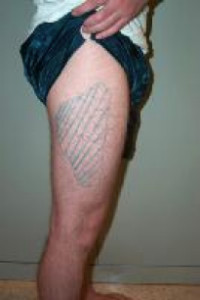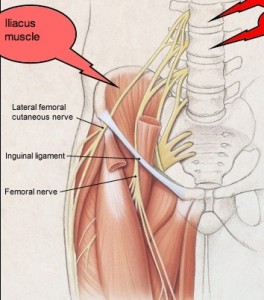introduction
- Meralgia paresthetica occurs when the lateral femoral cutaneous nerve of the thigh becomes trapped in the groin area.

- Obesity and obstructive respiratory disease with a chronic cough increase susceptibility.
- The disorder affects men three times as often as women.
Symptoms
- The primary symptom is paresthesia, or numbness in the thigh. The numbness may include burning, stinging, tingling, prickling, or a feeling “like pins and needles.”

- In the early stages symptoms are mild and intermittent. They are aggravated by standing or walking and relieved by lying down.
- In advanced stages, paresthesia develops into shooting pains that are unaffected by position change.
- Symptoms tend to regress spontaneously, but recurrence is common
Diagnosis
- Diagnosis is based on the patient’s medical history and evidence of sensory loss strictly within the area of the thigh served by the lateral femoral cutaneous nerve.
Treatment
- Non-surgical
- They include eliminating clothing or accessories that may cause compression; weight loss and exercise to strengthen abdominal muscles; and non-steroidal anti-inflammatory medications.
- These measures bring relief in approximately 90 percent of cases and should be tried prior to considering surgery.
- Surgery
- Decompression of the nerve.
- Division of the nerve (neurectomy)
- More effective at relieving pain.
- Leaves permanent numbness in the area supplied by the nerve







